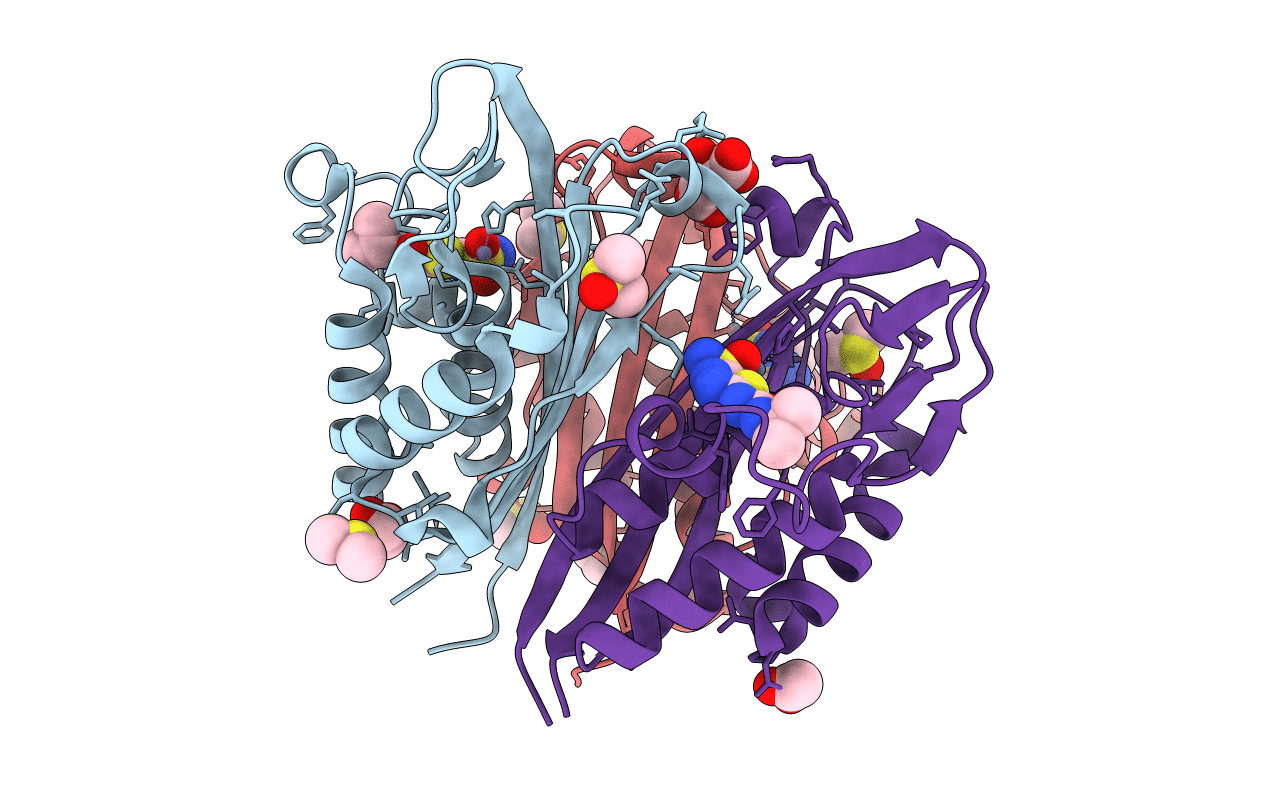
Deposition Date
2019-11-26
Release Date
2020-12-09
Last Version Date
2025-04-09
Entry Detail
PDB ID:
6V3M
Keywords:
Title:
Crystal structure of 2C-methyl-D-erythritol 2,4-cyclodiphosphate synthase (IspF) Burkholderia pseudomallei in compomplex with ligand HGN-0961 (BSI110840)
Biological Source:
Source Organism:
Burkholderia pseudomallei (strain 1710b) (Taxon ID: 320372)
Host Organism:
Method Details:
Experimental Method:
Resolution:
1.55 Å
R-Value Free:
0.16
R-Value Work:
0.14
R-Value Observed:
0.14
Space Group:
C 1 2 1


